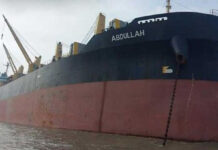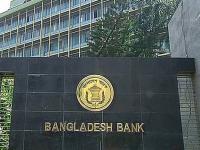by Tahmima Anam
PEOPLE trapped in Dhaka’s notoriously gridlocked traffic have developed various coping strategies. Some take naps. Others work or catch up on social media.
My mother likes to text me to complain about the traffic. “Still stuck in Mohakhali,” she writes. “Two hours from Gulshan to Banani!”
But one thing binds all commuters together: Make sure you use the toilet before you set off, because there won’t be anywhere to go en route.
If I could, I would write a book called “Where to Pee in Bangladesh.” It would be a useful but very short book. It would tell you, for instance, that in our capital city, there are 67 public toilets for over 15 million residents. And of those 67, many have no running water or electricity. According to a 2011 study, only five are fully functional.
The Dhaka City Corporation, which built new public toilets as part of a 2005 sanitation program, leased them to private contractors because it wanted to outsource their maintenance. But this system has not worked because the contractors often use the buildings for selling drinking water or washing cars. Sometimes, the space is rented out for people to sleep in. Some offered no sanitary facilities whatsoever.
Although the lack of public toilets in Dhaka affects both sexes, men have the distinct advantage of being able to take to the streets. They can be found squatting at roadsides, in alleyways, by railroad tracks or over ditches. When it rains, you can see a line of umbrellas next to rows of men as they crouch over a drain. And walls everywhere are treated as urinals.
The ubiquitous signs in Bengali that say “Do Not Urinate Here” are ignored. Moves to impose fines for public urination have come to nothing.
The anthropologist Mary Douglas famously defined dirt as “matter out of place”: What we consider polluted is merely a question of context. Now the Ministry of Religious Affairs has found a way to tackle the problem — by changing the context.
Its technique is to pepper the walls with Arabic script. Because, the logic runs, people won’t pee on what they consider holy.
The campaign, devised by the advertising agency Grey, features a video called “Language Matters.” It shows people painting over signs in Bengali and replacing them with Arabic. Almost no one knows what the words mean because few Bangladeshis understand Arabic. A patronizing voice-over explains, “Arabic is the sacred language of the people.”
The video shows men approaching the freshly painted walls, noticing the Arabic signage and slipping away guiltily. The men are shamed into feeling that if they were to urinate there, they would be committing an unholy act. The minister for Religious Affairs has urged men to use public toilets in the nearest mosque. I suppose he thinks he’s doing society two favors: getting men to stop urinating on the streets and getting more of them to go to mosques.
This may seem a reasonable form of behavior modification, a classic “nudge.” But the approach is deeply insensitive, because in Bangladesh, language has long been a matter of national identity.
The very seeds of our independence movement were sown when, in 1948, the government of Pakistan declared Urdu, not Bengali, the official language of East Pakistan, as Bangladesh was then known. And during the 1971 war of independence, faith and language were pitted against each other in the struggle over nationhood: The Pakistani Army would randomly stop people and ask whether they were Muslim or Bengali — as though to speak Bengali precluded being a true believer.
So the writing on the wall today contains an echo of that old conflict. It tells Bangladeshi citizens that it is acceptable to urinate on their own language, but not on Arabic. At a moment when the shadow of Islamic fundamentalism looms large, the subtext of the signage is to declare the conservative religious forces triumphant in this symbolic struggle over language.
Predictably, the ministry has been heavily censured. Critics argue that the government should spend its money on building toilets, not painting signs. And people comment sardonically that the walls of Dhaka may be covered in Arabic, but we still have nowhere to pee.
It is estimated that by 2025, Dhaka will be home to 20 million people. The government has a duty to ensure that these urban citizens — garment factory workers, rickshaw drivers, shopkeepers, truckers; in short, the people who make our city work — have access to the basic facilities they need to lead a dignified life. Researchers estimate that up to 5.5 million urban poor workers are outdoors in the city for between five and eight hours a day.
Even if the city corporation built more toilets, though, it would not begin to address the real sanitation crisis in Bangladesh: the near-total lack of access for women. In Dhaka, men can commit this private act of urinating with impunity in almost any public space. And when they do so, they are expressing their absolute freedom to do as they please — on streets where women’s basic safety is not guaranteed.
The Arabic lettering campaign focuses entirely on getting men to do their business elsewhere. Overlooked is that women can’t use the streets at all, reinforcing the social norm that public space is controlled by men and off limits to women. The invisibility of women’s needs is all too apparent in the minister’s proposal, for women are effectively barred from most mosques.
Any campaign to address the public nuisance of men urinating on the streets should also tackle the absence of facilities for women. Otherwise, we are simply saying that our streets belong to men, and our walls to Arabic.
Source: NYTimes










